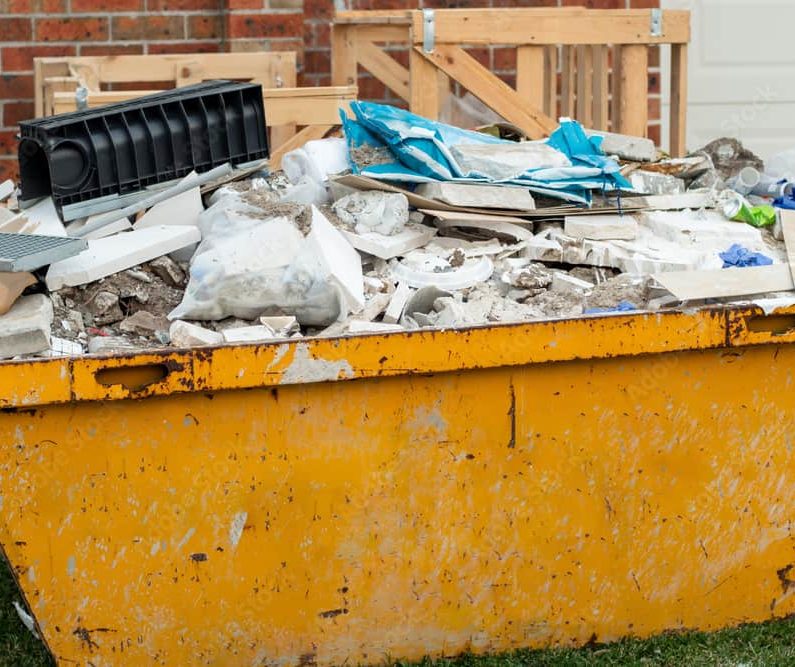As a business owner, waste management is one of the most important aspects to consider. A lot of waste is generated by businesses daily, and disposing of it is crucial to maintain a clean and safe environment. Skip bins are an excellent solution for businesses looking to manage their waste effectively. However, choosing the right skip size can be a daunting task. This article will provide a comprehensive guide to help you choose the right skip size for your business.
Understanding Skip Sizes
Skip sizes are measured in cubic yards, and the most common sizes available are 2, 4, 6, 8, 10, 12, 14, and 16-yard skips. The size of the skip you choose will depend on the amount of waste your business generates. It’s important to note that the size of a skip is not the physical size of the skip itself, but rather the volume of waste it can hold.
Factors to Consider When Choosing Skip Sizes

Type of Waste
The type of waste your business generates will determine the skip size you need. If your business generates a lot of heavy waste, such as construction debris or soil, you will need a larger skip size. On the other hand, if your business generates a lot of light waste, such as paper or cardboard, a smaller skip size may be sufficient.
Frequency of Waste Collection
The frequency of waste collection is another essential factor to consider when choosing skip sizes. If your business generates a lot of waste daily, you will need a larger skip size or more frequent collections. On the other hand, if your business generates waste less frequently, a smaller skip size or less frequent collections may be sufficient.
Space Availability
The amount of space you have available on your business premises will also determine the size of the skip you can choose. If you have limited space, choose a smaller skip size that fits a restricted area. However, if you have ample space, you can choose a larger skip size to hold more waste.
Choosing the Right Skip Size
Now that you understand the factors to consider when choosing skip sizes, it’s time to choose the right skip size for your business. Here is a step-by-step guide to help you make the right decision:
Step 1: Determine the Type of Waste Your Business Generates
The first step is to determine the type of waste your business generates. This will help you choose the right skip size that can hold the waste generated.
Step 2: Estimate the Amount of Waste Generated
The next step is to estimate the amount of waste your business generates daily or weekly. This will help you determine the skip size you need.
Step 3: Consider the Frequency of Waste Collection
The frequency of waste collection is an essential factor to consider when choosing skip sizes. If your business generates a lot of waste daily, you may need a larger skip size or more frequent collections.
Step 4: Determine the Space Availability
The amount of space you have available on your business premises will also determine the size of the skip you can choose. If you have limited space, choose a smaller skip size that fits a restricted area.
Step 5: Choose the Right Skip Size
After considering the factors mentioned above, you can now choose the right skip size for your business. If your business generates a lot of waste, you may need a larger skip size, such as a 12 or 16-yard skip. On the other hand, if your business generates less waste, a 4 or 6-yard skip may be sufficient.
FAQs
How often should I empty my skip bin?
It depends on the amount of waste your business generates. If your business generates a lot of waste, you may need to empty the skip more frequently. Generally, skip bins are emptied once a week or every two weeks.
Can I mix different types of waste in the same skip bin?
It’s important to segregate different types of waste to ensure proper disposal. Mixing different types of waste can lead to contamination and make recycling difficult.
What if I choose the wrong skip size?
If you choose the wrong skip size, you may pay more than necessary or overload the skip. It’s important to estimate the amount of waste your business generates and choose the right skip size.
Can skip bins be placed on the street?
In some cases, skip bins can be placed on the street with a permit from the local council. It’s important to check with your local council for the regulations regarding skip bin placement.
Can skip bins be used for hazardous waste?
Skip bins should not be used for hazardous waste such as asbestos, chemicals, or medical waste. Disposing of hazardous waste properly is essential to avoid harming the environment and public health.
